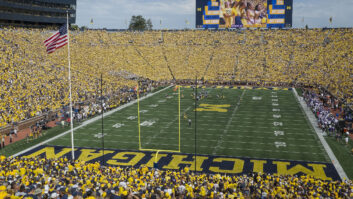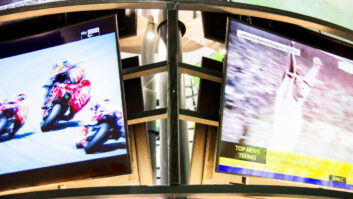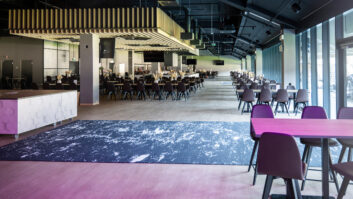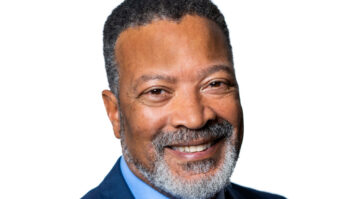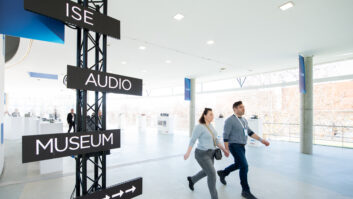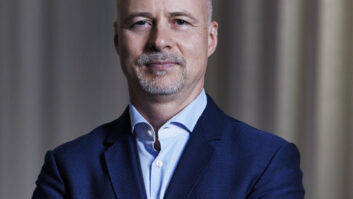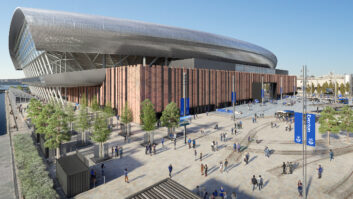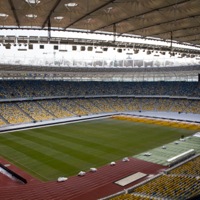
“It’s not just a stadium, it’s also part of our history,” says the young guide at the start of our tour around the Olimpiyskiy Stadium in Kiev. Some of that history is reflected in the various names that the venue has been given over the years. For most of its lifetime it was known as the Republican Stadium; however, it was opened in 1923 as the Red Stadium of Trotsky, and other names have included the Republican Stadium of Khrushchev (prior to becoming Soviet premier, Khrushchev governed Ukraine for a decade), the All-Ukrainian Stadium and the Central Stadium. Following Ukrainian independence at the start of the 1990s, national status was conferred on the stadium in 1996, and it was became the Olympic National Sports Complex.
In 2008, a major reconstruction began, to prepare it for the 2012 UEFA European Football Championship; this included the demolition and reconstruction of the lower tier, the creation of a completely new west stand with luxury boxes, and the installation of a new roof. The 70,050-capacity venue is now the country’s largest sports complex – it has facilities for several sports, including an athletics track – and is the second-largest stadium in Eastern Europe. It also features the largest pair of LED screens in the country – each more than 103sqm and weighing 9.5 tons. There’s also a total length of more than 250m of LED screens by the touchline.
The Olimpiyskiy will host half of the Group D matches in Euro 2012 – Sweden will play England, France and Ukraine here – followed by a quarter-final and the final. But it’s not only football that is bringing the stadium to the world’s attention; it is also drawing internationally renowned music acts. The stadium was inaugurated in October 2011 by a performance by Shakira, while performers scheduled for later this year include Red Hot Chili Peppers, Madonna and Kasabian.
Equipment-wise, the Olimpiyskiy stadium is an impressive showcase for Bosch-owned brands. There is Electro-Voice audio networking, amplification and loudspeakers, a Praesideo fire safety system and a Bosch CCTV system. As Maksym Stoyko, Ukraine sales manager for Bosch Security Systems, points out: “In Ukraine, Bosch is unique – we have the combination of video surveillance, intrusion, access control, public address and fire systems.” Sound decisions The tender for supplying and installing the audio systems was won by Sound House Pro, an audio distribution and installation company based in the Ukrainian city of Dnipropetrovsk and headed by Andrey Garkaviy. Conversations with the architects took a familiar line. “The architect and the designers wanted first that the sound system would not be visible; second, there should be no big speakers, no line arrays, and they should not weigh a single gram! The sound should be everywhere, all by itself,” says Garkaviy with a wry smile.
This was a difficult conversation for Sound House Pro, made more so because, while the tender document had specified Electro-Voice XLC line arrays for the stadium bowl, it soon became apparent that the roof structure could not support the necessary weight. “That’s why we came back to a horn-loaded system,” he says.
There were, he says, many conversations between his company, the client and the architect, before the final selection, arrangement and installation of speakers was made. Acoustic simulations were run, and the stadium audio experts at EVI Audio also contributed their expertise, both at the design stage and when tuning the installed system. Suspended around the stadium roof there are 80 Electro-Voice EVH 1152 horn-loaded speakers, ten Electro-Voice Xi-2122MHA two-way long-throw cabinets and 80 Electro-Voice EVF-1181 subwoofers. The high proportion of subwoofers was at the behest of the client. “If you look at the master curve in our system, we reduce the low-frequency signal by approximately 6dB from 150Hz downwards,” he explains. The result is an average SPL in the bowl of not less than 102 dB, and an STI between 0.48 and 0.51.
In addition, there are 126 under-balcony speakers for those seated further back in the lower tier. The main control room and eight remote amplifier racks are interconnected via a redundant 100Mbit double-ring network – if a network connection breaks, the data can still travel around the ring in the other direction. Networking is via CobraNet (for audio) and Ethernet (for control).
The audio is managed by EVI’s NetMax N8000 system controllers, running the company’s IRIS-Net software. Amplification is provided by Electro-Voice CPS4.5 and CPS4.10 from the company’s Contractor Precision Series. The speaker cabinets are connected in biamp mode: high frequencies are sent in 500W channels, low frequencies in 1kW channels.
With such a large and dispersed audio system, Sound House Pro has created a tool to simplify monitoring. “We have designed a special interface for this system in the IRIS-Net software,” explains Garkaviy. “This allows us to see and control all the parameters of the loudspeaker system in one window.”
The interface provides a schematic drawing of the whole stadium, and clicking on any of the sectors gives access to the parameters in the respective area. “You can see which loudspeakers are turned on, you can check the current mode of the power amplifiers, the signal levels, the temperature and protection mode,” he says.
@page_break@ Thanks to microphones placed on the roof and around the stadium, overall SPLs in individual sectors can be measured and the speaker outputs adjusted accordingly. “We can control the volume in each sector, if the public are not evenly spread around the stadium,” he says. “We can monitor the signal that comes into every sector. As we have 24 inputs on the processor, we have made a virtual mixer. Each input has dynamic sound processing and equalisation. So the N8000 is not only a digital matrix and digital sound controller. In this situation we also see it, in part, as a small digital mixing console.”
Each rack has a redundant power amplifier, connected to a redundant channel on the local N8000. In the case of an amplifier failure, this spare amplifier can be used in one of three ways. If a single speaker type needs to be connected, that can be achieved without having to change any cabling. If different types of speakers need to be connected to the redundant amplifier, spare cabling has been provided. The third option is simply to pull out the redundant amplifier and put it in place of the faulty one. Life safety links The Praesideo life safety system also uses CobraNet, Garkaviy explains: “It is connected to the Electro-Voice N8000, and can feed any signal, any message, to any given section of the stadium, using the special paging station. As it is a fire evacuation system it has the highest priority in the system.” Located in the CCTV control room, the voice system has a number of pre-recorded messages as well as a microphone for live announcements. These can be routed as required by selecting the required zones on a PC screen.
Oliver Sahm, director of pro audio tech support at EVI Audio, elaborates: “Within IRIS-Net and the N8000 processors we have a signal processing block that we call Priority Matrix. Each input of this matrix in the audio DSP of an N8000 gets a certain priority level via IRIS-Net control, and the matrix points can be controlled either by simple contact closure or by a serial data stream via the RS-232 interface locally. So Praesideo can control the cross points in the DSP matrix. As we have assigned different priorities we can ensure that, for example, alarm announcements can override the normal entertainment programme on different levels.
“Additionally this matrix has a memory, so it knows the status before the announcement. When the announcement or the alarm is over and the system switches back to normal operation, the matrix cross points are reset as they were before. So the entertainment is only interrupted for the announcement, and then the PA switches back to normal operation.”
Special cable had to be used to carry the audio signals from the amplifiers to the speakers – partly because of the length of the runs, and partly to prevent interference from the lighting power cables which run alongside. Cable specialist Klotz ais designed acoustic cables for this specific application, containing two or four 16sqmm cores and extremely dense braided shielding. (These are now in the company’s catalogue as LSB2160P and LSB4160P.) At the Olimpiyskiy stadium, responsibility for running all the ‘smart technology’, including the audio system and the CCTV, rests with Maksym Soleov, who is the head of the IT department.
“As an operator, this is one of the best stadium sound systems that I have ever used,” he says. “The system is very easy to control and manage, and powerful enough to use not only for matches but also for special events.” What makes it easy to use? “It is scalable – you can control it in general and in parts.” This is very important, he adds, because the stadium can be used very differently for live events than on match days. “We can use just part of the stadium and put the sound there.”
The sound quality generated by the system means that live event organisers have been happy to include it within the setup for the three concerts that have been held there to date at the time of IE’s visit – saving money for the stadium management. Additional speakers for live events are placed on the pitch.
Depending on when you read this, UEFA is within a few days of taking over the stadium in readiness for the championship (on 11 May). But even at the time of our visit in early March, everything looked ready for the massive influx of Euro 2012 fans. Let the games begin Keeping track of 70,000 According to UEFA requirements, every person in the stadium must be capable of being seen on camera. To achieve this, 450 CCTV cameras have been installed – about 40 of which are movable. There are eight CCTV control rooms around the stadium.
The stadium perimeter is covered by 16 movable cameras, with another 16, which are vandal-proof, overlooking the bowl. Anti-vandal models – from the Bosch Extreme Series – are also used anywhere that cameras are within reach of the public.
All the entrances and exits of the stadium are covered by the fixed cameras, and it is planned to add surveillance cameras at the ticket-checking points at the main entrance. “This is to be able to identify each person entering the stadium and compare it to the person who has purchased the ticket,” comments Bosch’s Maksym Stoyko. To make such future extensions easily achievable, an IP-based system was chosen.
Another possible development is the implementation of intelligent 16-parameter analysis of video data, enabling a fast search for particular faces, colours or objects. Also planned is the ability to link CCTV and access control systems. All video information is stored on SCSI arrays; the 300GB capacity is enough for three months’ worth of material. Omneo in stadiums? Bosch recently announced its Omneo audio networking platform, based on the Dante protocol. What role does EVI Audio’s Oliver Sahm see for Omneo in stadium installs of this kind?
“I think we will see a development in that direction. Latency is not really an issue in a stadium system, but as Omneo is based on the audio side on the Dante protocol, it gives you much more flexibility with respect to the number of channels, channel routing or network redundancy,” he says. “Because Dante offers much more options and possibilities, I think Omneo will also be established in stadium projects in the future.
“Also, if you have an installation like the one in Kiev, and let’s say in two or three years’ time the owner is looking to upgrade. He can just exchange the network card in the N8000 from CobraNet to a Dante module, and he can use the new protocol on the old hardware, on the same network topology. So we can ensure that there is some downward compatibility, and people can invest now and be future-proof. With some slight modifications they can upgrade their system to a new standard in the future. We do not have to tell them, ‘Sorry, you bought it three years ago, you have to replace it completely.’” Other Ukraine Euro 2012 stadiums Sound House Pro has installed a very similar audio system in the Arena Lviv, which has a capacity of just under 35,000. The network controllers, power amplifiers and connection scheme are the same as in Kiev, and again the sound reinforcement system is integrated with a Praesideo life safety system. According to Andrey Garkaviy, the similarity of the two projects enabled his team to complete the Lviv job much more quickly.
Because of the smaller scale of the Lviv stadium, there are only six amplifier rack rooms compared with eight in Kiev. Also, the mix of speakers is not so subwoofer heavy – overall there are 108 full-range speakers and 32 subs. The CCTV system at Lviv is not supplied by Bosch, but the company has supplied it to the other two Ukraine Euro 2012 stadiums, in Donetsk and Kharkiv. Donetsk also has a Bosch PA system, but not installed by Sound House Pro. Installed AUDIO Electro-Voice EVH 1152 two-way coaxial horn-loaded speakers Electro-Voice Xi-2122MHA dual 12in two-way long-throw cabinets Electro-Voice EVF-1181 18-inch front-loaded subwoofers Electro-Voice NetMax N8000 system controllers Electro-Voice CPS4.5 and CPS4.10 power amplifiers Bosch Praesideo life safety system Klotz ais LSB2160P and LSB4160P shielded cabling Bosch conferencing system www.boschcommunications.comwww.electrovoice.comwww.klotz-ais.com
